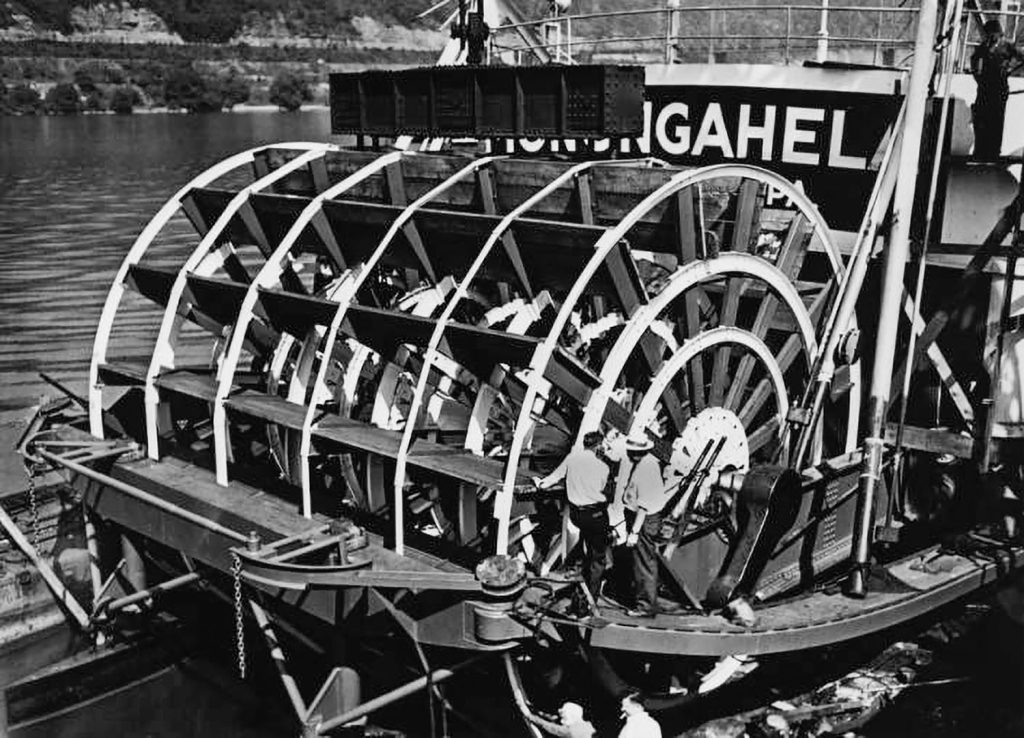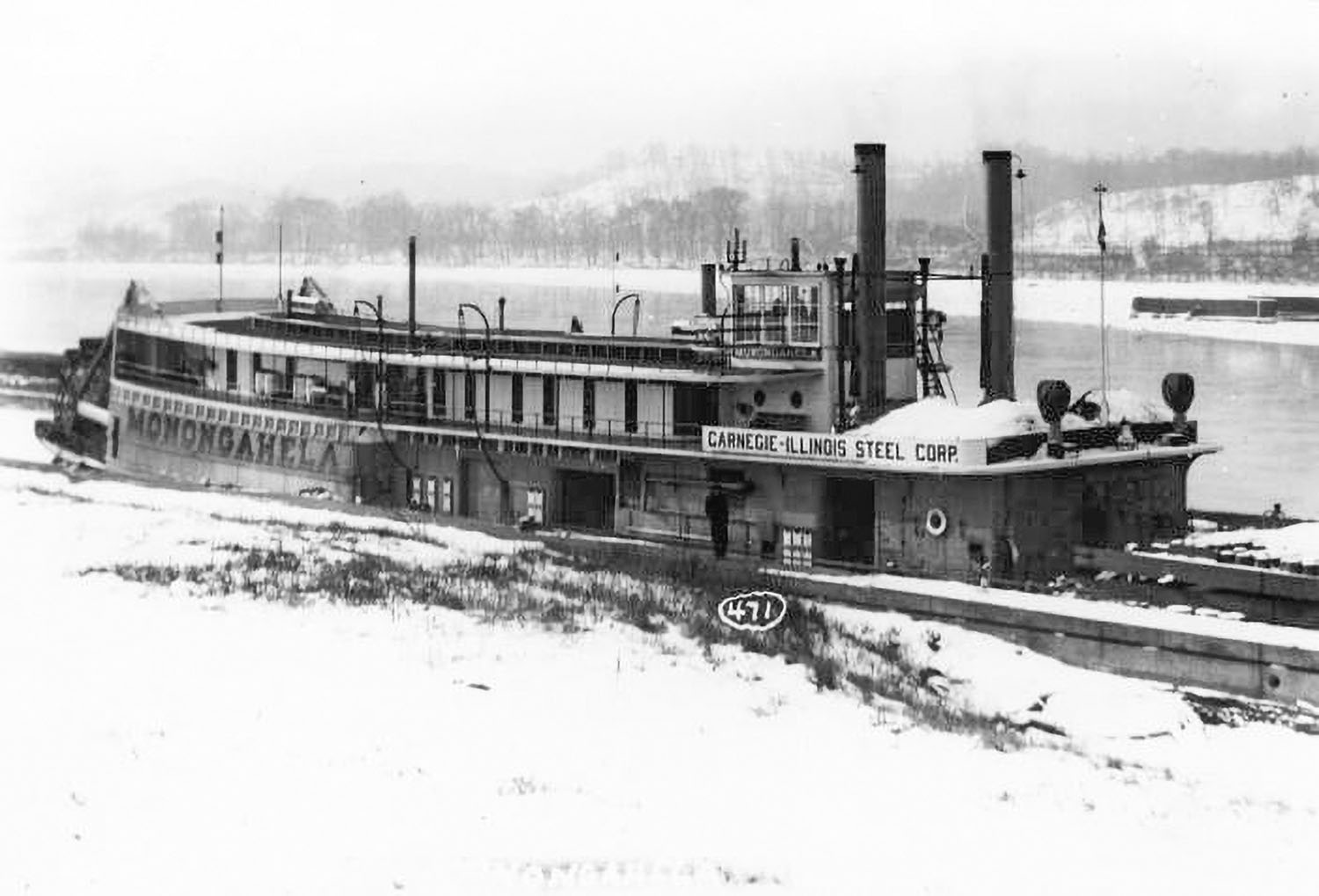By the mid-1920s, diesel-powered boats were becoming more numerous, but for the heavy jobs, such as towing steel products from Pittsburgh to points on the Lower Mississippi River, steam sternwheel boats were still a necessity. The Carnegie Steel Company had built a large sternwheel steamer for this purpose in 1926, which the company named City of Pittsburgh. It departed its namesake city on March 22, 1926, in charge of Capt. Calvin Blazier (nicknamed Quaker Oats, and for whom the navigation light below Cairo, Ill., is named). Before returning to Pittsburgh, this new boat was sold to Standard Oil of Louisiana and was later renamed D.R. Weller.
Carnegie then contracted for two near duplicate boats with the hulls to be built by the American Bridge Company at Ambridge, Pa., and completed at the Coal Valley Marine Ways. The first of these came out in February 1927 and was christened City of Pittsburgh, again with Capt. Cal Blazier in command. The second boat entered service in May of that year and was named Monongahela. It would be a fixture in the run from Pittsburgh to New Orleans for the next 28 years.
The Monongahela had a steel hull that was 169.8 by 38.9 feet with a sternwheel that was 26-1/2 feet in diameter and 24 feet wide, having 16 buckets with 38-inch dip. The compound condensing engines were 18’s, 36’s with an 8.6 foot stroke. There were five return-flue boilers that were fired by coal, and the boat was rated at 1,400 hp. According to Way’s Steam Towboat Directory, the two pitman arms that connected the engines to the sternwheel were named “Col. Charles A. Lindbergh” and “Spirit of St. Louis” in commemoration of Lindbergh’s historic transatlantic flight in May 1927, at about the same time the new boat began operations.
Capt. John Hottell was the first master of the Monongahela, with Capt. William Timmons, pilot; William Herd, chief engineer; Ed German, second engineer and Rolla Rodgers, mate.
In January 1941, the Ohio Barge Line (OBL) was formed, and both the City of Pittsburgh and the Monongahela were placed under that flag. In 1946, OBL had the Monongahela extensively rebuilt in a program that included a new hull that was installed on the ways of Dravo at Neville Island, Pa., and it was also converted from coal-burning to oil-fired furnaces. It was moved to the American Bridge plant at Ambridge, where the sternwheel was removed and completely rebuilt.

Even after OBL acquired the 2,000 hp. DPC prop steamers Orleanian and Pittsburger in 1949, the news columns of The Waterways Journal show the Monongahela still making the regular trips from Pittsburgh to New Orleans. It suffered a sinking while downbound on the Mon River at Pittsburgh in April 1954 when a barge in tow sank, and the boat struck it. It was repaired and returned to service, but not for long. The DPC steamer Lunga Point was acquired by OBL in February 1954, and the sternwheel Monongahela was retired in 1955. One of the pilots to serve aboard in the final days was Capt. Ross Rogers Jr.
The boat appeared in the Off The Record section of the 1956 Inland River Record with Capt. Fred Way making note that it had been “the largest active sternwheeler on the rivers for the past several years.” (The steam sternwheel Herbert E. Jones was still in service at the time, with a hull just 1 foot shorter and 1 foot narrower yet rated at more horsepower than the Monongahela.)
In 1957, the Monongahela was sold to the McDonough Construction Company of Parkersburg, W.Va., for dismantling. The pilotwheel was donated to the Sons & Daughters of Pioneer Rivermen at that time and was placed in the Ohio River Museum at Marietta, Ohio. The partially dismantled boat was later sold to South American interests and reportedly while under tow there broke loose from the tug and wound up beached on the shore of Cuba.
Caption for top photo: The Monongahela as built and in service for Carnegie Illinois Steel. (David Smith collection)
Capt. David Smith can be contacted at davidsmith1955obc@gmail.com.




